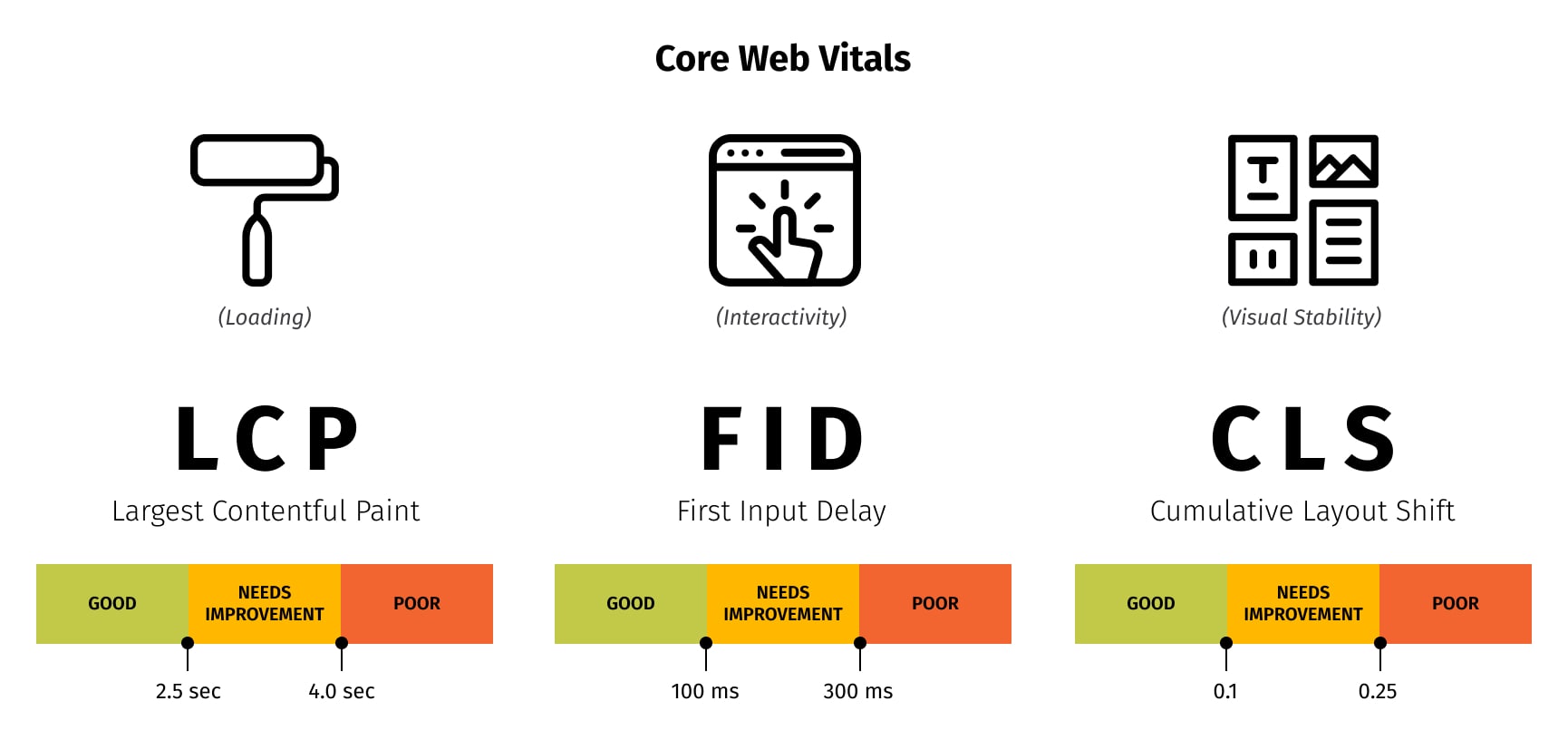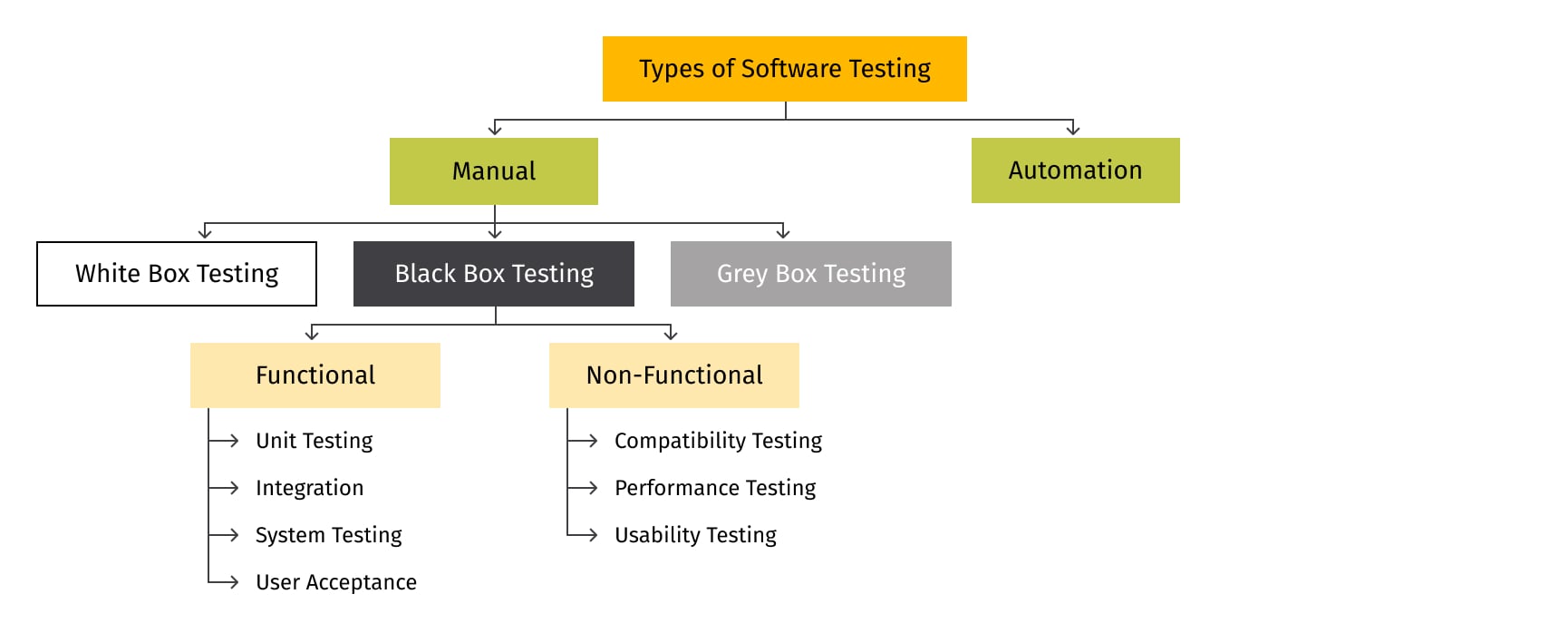
Retail application performance optimization: lessons from the trenches
In the rapidly-evolving digital landscape, the performance of an application can dramatically influence a company's success. Users expect fast, efficient, and smooth experiences, and failing to meet these expectations can result in losing customers to competitors.
In this investigative article, we dive into the nitty-gritty details of our team's efforts to optimize the performance of a prominent retail client's application.

Оur goal was to improve the performance of our client's application, a crucial platform for their millions of users. This endeavor was a massive undertaking, requiring meticulous planning, extensive testing, strategic restructuring, and continuous learning.
Throughout our journey, we faced numerous challenges, including limited access to resources, the need to maintain consistent testing environments, and the complexities of inter-team communication. However, amidst these challenges, we gained invaluable insights.
These insights not only helped us overcome the obstacles we encountered but also provided crucial lessons for future projects. In this article, we provide an honest account of our performance optimization project, shedding light on the realities of such a significant undertaking.
We invite you to join us as we explore the hurdles we faced, the lessons we learned, and the advice we have to offer for those embarking on similar endeavors.
Setting the stage
To fully appreciate our performance optimization journey, it's crucial to understand the scale and context of the project. Our client, one of the largest retail entities in the U.S., serves millions of customers daily.
Their application is more than just a shopping platform–it's a critical component of the customer journey, a vital touchpoint with a direct impact on their revenue.
When they decided to optimize their application performance, it wasn't a mere revamp or upgrade. It was an extensive venture involving multiple departments, a lot of team members, and numerous dynamic components.
The goal was straightforward: enhance the overall application performance to improve the user experience. However, the road to achieving this was complex and winding.
The optimization process covered everything from HTML and CSS improvements to request optimization, refactoring of legacy codebase, and even an overhaul of business logic. Concurrently, we had to navigate challenges such as maintaining software infrastructure stability, conducting thorough testing, managing resource allocation, and promoting effective inter-team communication.
In the following sections, we will unpack each of these challenges, delving into the strategies we employed to tackle them and the potential solutions we discovered. We will also highlight the valuable lessons learned throughout this project that could serve as a guide for any company seeking to optimize its application performance.
Unpacking the challenges
In our effort to achieve better optimization, we met many challenges. Our path was not straight or smooth, but we learned at every step.
We faced small issues that needed a close eye to solve, and big problems that slowed us down a lot. But every time we found a solution, we grew stronger and more knowledgeable.
Unpacking resource accessibility: The obstacle and the solution
During our journey to optimize performance, we encountered an early and significant challenge: resource accessibility. Given the complexity and scope of the project, it was evident that resources–including tools, technologies, access and skilled team members–played a crucial role.
We soon realized that delays in accessing these resources hindered our progress. We required specific tools and technologies to perform optimization tasks efficiently, but encountering delays limited our ability to do so. To overcome this challenge, we implemented a system for timely resource allocation and accessibility.
Our system for timely resource allocation and accessibility is a simple, yet effective shared document system. It contains a list of all the teams and the resources available to them. This document operates as a master schedule, providing a common platform for all teams to view, book, and manage resources.
Each team can reserve a time slot for a resource by manually updating the document with their team's name, the chosen resource, and the desired time slot. Teams are responsible for verifying that the time slots they book do not conflict with those of other teams. Time slots are booked on a first-come, first-served basis.
To accommodate different time zones, we request teams to convert their local time to Coordinated Universal Time (UTC) when reserving resources. This universal standard helps avoid confusion and ensures that all teams work with the same time reference.
The system does not yet have automatic notifications or conflict resolution mechanisms. If two teams book the same resource at the same time, they need to communicate and negotiate amongst themselves to resolve the conflict. Likewise, teams need to manually monitor the document for their bookings and any changes in the schedule.
Despite its simplicity, the system serves its primary function: facilitating the shared usage and management of resources among teams. It's an initial step towards a more efficient resource allocation process and forms the basis for future enhancements and additions.
We also understood that resource accessibility required ongoing attention. Our implemented system was not just about meeting immediate resource needs but also about adjusting and reallocating resources as the project evolved.
This solution enabled us to overcome the resource accessibility challenge and taught us a valuable lesson for future endeavors: the significance of a robust resource allocation strategy. By transforming this obstacle into a proactive approach to resource management, we established a foundation for smoother execution of tasks in the future.
Dismantling knowledge-sharing barriers: The problem and the path forward
Knowledge stands as the bedrock of any successful project, and our performance optimization endeavor was no different. The challenge of knowledge-sharing rapidly emerged as a significant impediment stifling our progress.
We identified that the lack of a structured knowledge-sharing process was leading to inefficiencies and misunderstandings. Procedures and protocols were not being clearly communicated among team members, generating a knowledge gap. This gap barred us from fully harnessing the collective skills and expertise within the team, which resulted in hampered project progression. We recognized that to efficiently solve complex problems, a unified understanding of processes and protocols was necessary.
It wasn't sufficient for individual members to harbor isolated pockets of knowledge; this knowledge needed to be effectively disseminated across the team.
The solution lay in implementing a structured knowledge-sharing process. This included the establishment of regular training sessions where team members could learn from one another, share expertise, and develop a common understanding of the project's requirements and procedures. In conjunction, comprehensive documentation was developed to serve as an easily accessible reference guide.
Nevertheless, we understood that this solution came with its own set of future challenges. Maintaining the consistency and relevance of the knowledge transfer as technologies and procedures evolve could pose a significant task. Regardless, we were committed to facing this issue squarely, acknowledging it as an integral part of a successful project.
By tackling the knowledge-sharing challenge, we did more than just enhance our current project performance. We created an environment that promotes learning, collaboration, and a better understanding of the project, setting the stage for more effective problem-solving in our future endeavors.
Struggling against testing limitations: The bottleneck and the breakthrough
A pivotal aspect of any optimization endeavor is a robust testing framework. It serves as the filter that catches the performance bottlenecks, errors, and problem areas in an application.

In our case, this filter had some gaps. We found ourselves wrestling with testing limitations, which evolved into a considerable challenge on our path to performance optimization.
Our issues ranged from an insufficient scope of testing and infrastructure problems, such as failing test cases, to difficulties accessing dedicated testing environments. These complications led to delays in identifying potential performance bottlenecks and problem areas in the application, culminating in inefficiencies and a slowdown in our progress.
We came to understand that the road to performance improvement was inextricably tied to the depth and quality of our testing. Without comprehensive testing, we were essentially navigating through a labyrinth blindfolded. We realized that it was imperative to invest in robust testing tools and infrastructure to gain the insights necessary to make informed decisions about the application's performance.
Cost of a software bug

In response, we broadened the coverage of our test cases, invested in more robust testing tools, and addressed the issues with our testing environments. We recognized that rigorous testing was critical to identifying performance bottlenecks and could not be shortcutted or handled superficially.
However, implementing these solutions meant acknowledging an essential fact: performance improvement without comprehensive testing coverage is either impossible or exceedingly time-consuming. To effectively optimize performance, we needed a thorough view of the application's performance, achievable only through meticulous, detailed testing.
By confronting our testing limitations and working to resolve these issues, we made a significant stride towards optimizing our application's performance, setting a new benchmark for our future projects. This experience underscored the critical role that comprehensive testing plays in performance optimization, providing valuable lessons for others in similar situations.
The repository and documentation paradox: Unraveling the code chaos
In our pursuit of performance optimization, we encountered a challenge that many overlook: maintaining and documenting our code repositories. What seemed like a simple task turned into a complex obstacle, slowing our progress and adding complexity to our path.
For a significant period, several of our code repositories were neglected, hindering our optimization efforts. This made it challenging to understand the existing codebase and perform efficient updates. It was like having an incomplete instruction manual with jumbled instructions.
Adding to the challenge, inadequate documentation further complicated matters. The lack of comprehensive and up-to-date documentation made it difficult to navigate the codebase, comprehend its intricacies, and make necessary updates. It was as if we were trying to follow a treasure map with missing markings and unclear landmarks.
To address these issues, we took a proactive approach. We established regular maintenance practices for our repositories and started to do detailed documentation for all projects. Although some might perceive these tasks as trivial, we recognized their long-term significance.
Understanding the pivotal role of clear and comprehensive documentation, we meticulously documented our processes and tasks. We aimed to create a reference guide that any team member, present or future, could use to navigate the codebase and make updates as needed.
Additionally, we started to implement a system for regularly maintaining and updating the code repositories, ensuring smooth operation and accessibility. This solution will significantly reduce the time spent on understanding and updating the codebase.
Looking ahead, we anticipate the challenge of maintaining ongoing, accurate, and comprehensive documentation as the codebase evolves and updates become more frequent. We are committed to proactively addressing this challenge.
In conclusion, by identifying the issues with repository maintenance and documentation and implementing active solutions, we enhanced the effectiveness of our performance optimization process. This experience reaffirmed the notion that sometimes, it's the seemingly mundane tasks that play a pivotal role in a project's success.
The environment enigma: navigating through the maze of inconsistencies
The Testing and Development environments form the backbone of any software project. They provide the stage upon which developers and testers shape, mold, and refine the software.

But what transpires when this stage is not stable? Our team encountered this reality when we grappled with environment inconsistencies during our performance optimization project.
We needed more dedicated environments for comparing performance improvements. This deficiency made it challenging to accurately measure the impact of our optimization efforts, and it led to difficulties in maintaining consistency across development and testing stages. Essentially, it was akin to assessing an athlete's performance by observing them train in different conditions each time–the results would inevitably be skewed.
Additionally, we noticed inconsistencies in data between the testing and production environments. It was like using a ruler with uneven markings–the measurements would always be off. These inconsistencies made it harder to ensure the accuracy of our tests and the effectiveness of our changes.
Addressing these challenges was no small feat. We decided to establish dedicated environments specifically for performance comparison. These environments are distinct from development and production and are designed to mimic real-world usage as closely as possible. This way, we could obtain accurate measurements and results reflecting the true impact of our optimization efforts.
Furthermore, we tried to implement strict data consistency protocols across all environments. By ensuring that the same data and software configurations were used across all environments, we could mitigate the issues arising from inconsistencies and maintain a unified view of the application's performance.
The experience of navigating through these environmental inconsistencies underlined the importance of maintaining consistent environments and implementing dedicated ones for performance measurements. It was a challenging lesson to learn, but it was instrumental in shaping our approach to future performance optimization efforts.
Inter-team communication: The unsung hero of effective collaboration
During the course of our project, we encountered a significant challenge that is often overlooked: inter-team communication.
Despite the multitude of communication tools available in today's digital age, effective communication can still be elusive, particularly in complex projects involving multiple teams.
Our performance optimization endeavor brought together several teams, each responsible for different aspects of the application. However, we quickly realized that the lack of effective communication mechanisms between these teams resulted in misunderstandings and misalignment of goals. It was as if each section of an orchestra played without listening to the others, resulting in a performance that lacked coherence and harmony.
These communication issues hindered the progress of the project and led to potential inefficiencies. Information gaps caused duplicated efforts and misaligned objectives, pushing the project off track. It became evident that while individual team performance is important, the interaction between teams is equally crucial, if not more so.
To address these issues, we made the decision to revamp our communication strategy. We focused on developing effective communication channels and protocols with other teams to ensure clear and consistent communication. This involved regular inter-team meetings, shared documentation, and collaborative platforms that helped keep everyone on the same page.
We also emphasized the importance of active listening and understanding the perspectives of other teams. By fostering a culture of open communication and mutual respect, we managed to bridge the communication gap, align our goals, and work more effectively towards our common objective.
Our experience underscored the notion that while technology can facilitate communication, human elements like clarity, empathy, and understanding are essential for effective inter-team collaboration. As we learned, good communication can be the difference between spinning wheels and gaining traction on the path to success.
Frequent plan adjustments: The disruptive dance of constant change
Any team working on an ambitious project expects a degree of change; it's a given in the dynamic realm of tech.

However, when change becomes the only constant, it can swiftly turn into a stumbling block.
Our team learned this firsthand during our performance optimization project. Our plan for performance improvement was in a constant state of flux. While flexibility is a virtue in tech development, the degree of change we experienced quickly became counterproductive.
We found ourselves frequently altering our plan on the fly due to evolving project requirements, unexpected issues, and shifting priorities. This dynamic nature of the plan made it difficult for us to maintain a clear, consistent focus, which, in turn, impacted the effectiveness of our optimization efforts. The constant alterations disrupted our workflows, muddled team roles, and blurred the project's goals. It felt like we were trying to hit a moving target, an endeavor that proved frustrating and unproductive.
Recognizing the detriment of this challenge, we sought to establish a more stable planning and implementation process. We aimed to strike a balance, allowing room for necessary adjustments while maintaining a consistent focus on the project's goals. This stability would give us a concrete, consistent framework within which we could operate more efficiently.
Our experience taught us the importance of striking a balance in planning. A plan should not be overly rigid, hindering innovation and adaptability. Conversely, it should not be so flexible that it lacks guidance and structure.
A successful plan should provide clear and stable goals while allowing room for adaptation and course correction. To use a metaphor, it's like navigating a ship at sea. We may need to adjust our course based on the winds and waves, but we must always keep our destination in sight. This approach allows us to navigate the challenges of change while staying focused on our project's objectives.
QA team challenges: The multifaceted puzzle of quality assurance
Quality assurance (QA) is a critical function within any development project, particularly when it involves application performance improvement. However, the QA team faced an array of challenges that revealed just how complex this function can be.
One of the key issues revolved around storing and organizing test cases. The team grappled with creating, organizing, and storing these cases in an efficient manner while maintaining version control, identifying dependencies, and tracking execution status. Additionally, they faced the continuous task of updating test cases to match the evolving software requirements, a crucial process to prevent obsolescence and redundancy.
Unraveling the web of test case dependencies was another challenge. The team needed to identify these dependencies and ensure they were executed in the correct sequence, a particularly complex task when dependencies were convoluted or poorly defined.
Integration with test automation posed a technical challenge but was necessary for seamless execution and reporting of automated test cases. Setting up and maintaining consistent test environments proved to be a roadblock, given the need for reproducibility, stability, parallel testing, and the flexibility to simulate different scenarios.
Managing complex Automated Testing Framework (ATF) structures was another considerable hurdle. This involved identifying unsupported code and anti-patterns, applying software engineering principles, simplifying test data management, and ensuring proper test case organization.
The QA team faced a challenge in creating effective documentation for the ATF code to provide clarity and context. This documentation was critical for ensuring that other team members could understand the code and troubleshoot any arising issues.
Lastly, incorporating continuous integration and continuous delivery (CI/CD) practices into the ATF development process was a technical challenge. However, these practices are vital for automating the build, test, and deployment processes, improving efficiency, and ensuring the delivery of a high-quality product.
Navigating these hurdles was a daunting endeavor. However, each challenge provided a stepping stone to develop effective solutions and highlighted areas for process improvement. From this, our team understood that overcoming QA challenges required a comprehensive strategy that could address these multifaceted issues, underscoring the importance of a well-planned, flexible, and robust QA process.
Transforming trials into pathways for progress
The path to improve our application's performance has been a journey paved with valuable lessons derived from varied challenges. Each obstacle encountered has yielded insights that are now profoundly shaping our future undertakings.
- A significant lesson learned was the power of knowledge sharing. Hurdles faced in disseminating information emphasized the necessity for a systematic approach to fostering team-wide understanding and alignment. Regular training sessions, thorough documentation, and clear, open communication channels have become cornerstones in our strategy to disseminate knowledge effectively.
- Issues related to repository maintenance and documentation acted as a wake-up call, reiterating their significance in any project. Recognizing the importance of regular repository maintenance and comprehensive documentation, we are now better equipped to navigate and update our codebase efficiently.
- Our experience with inconsistencies across various environments, and the absence of designated performance comparison setups, underscored the need for uniform data and settings across development, testing, and production environments, which we now prioritize to accurately measure our optimization efforts.
- The value of clear and effective inter-team communication was another essential lesson. The experience taught us that misunderstandings and misalignment of goals can severely hamper progress. Consequently, we have made it a priority to establish robust communication channels to nurture better collaboration and mutual understanding.
- The necessity for frequent plan adjustments underlined the importance of stable and focused planning. We learned that while adaptability is vital, it's equally crucial to maintain a consistent focus on the project's overarching goals. Balancing flexibility and stability has proven key to maintaining project momentum.
- Encountering testing limitations underscored the importance of comprehensive testing in any project. This experience has taught us the importance of managing test cases effectively, maintaining consistent testing environments, understanding test case dependencies, and implementing a well-structured Automated Testing Framework. Thorough testing plays a pivotal role in early identification of potential issues, thus preventing delays and inefficiencies. Consequently, we now emphasize investment in robust testing tools and methodologies to ensure comprehensive coverage.
These trials and lessons learned have significantly expanded our understanding of performance improvement projects. We now appreciate that technical proficiency alone is not sufficient. Effective communication, strategic planning, efficient resource management, and a structured QA process are equally crucial to the success of a project.
Looking forward, our focus remains on proactive and timely resource allocation strategies, fostering knowledge sharing through regular meetings, training sessions, and thorough documentation, investing in reliable testing tools and methodologies, maintaining up-to-date repositories, ensuring consistency across environments for accurate benchmarking, enhancing communication protocols, balancing flexibility and stability in project planning, and implementing efficient QA processes.
The path to performance improvement is a commitment to continuous learning and improvement. We see every challenge as an opportunity for growth and innovation, and we approach future initiatives with a well-rounded perspective and renewed confidence.
In conclusion: Tackling performance in legacy enterprise projects
Performance improvement in legacy enterprise projects is undoubtedly a formidable challenge. The complexities of updating outdated systems, managing a sprawling codebase, and ensuring seamless operations throughout the improvement process present a unique set of hurdles. However, our team's experience with legacy enterprise projects, like the previous one, has proven that these challenges can be overcome.
Through our collective experience and professionalism, we have demonstrated our ability to navigate these hurdles effectively and not only mitigate risks but also enhance the entire performance improvement process.
From addressing resource accessibility to refining our QA practices, we have shown that with the right approach, even the most daunting obstacles can be turned into opportunities for learning and growth. The journey to enhance retail application performance was undeniably challenging, but it was also a transformative experience.
We can see that each challenge we encountered served as a stepping stone, sharpening our skills and refining our approach. These challenges compelled us to develop innovative solutions and fostered a culture of resilience and continuous improvement within our team.
However, our journey doesn't end here.
We are eager to carry forward the lessons we have learned, continue to refine our methods, and apply our enhanced capabilities to future endeavors. With our knowledge and experience, we are confident that we are well-prepared to tackle any future challenges that come our way.
Performance improvement in legacy enterprise applications will always present its share of difficulties, but our experience has shown that with the right mindset, unwavering commitment, and a skilled team, we can turn these challenges into success stories.
